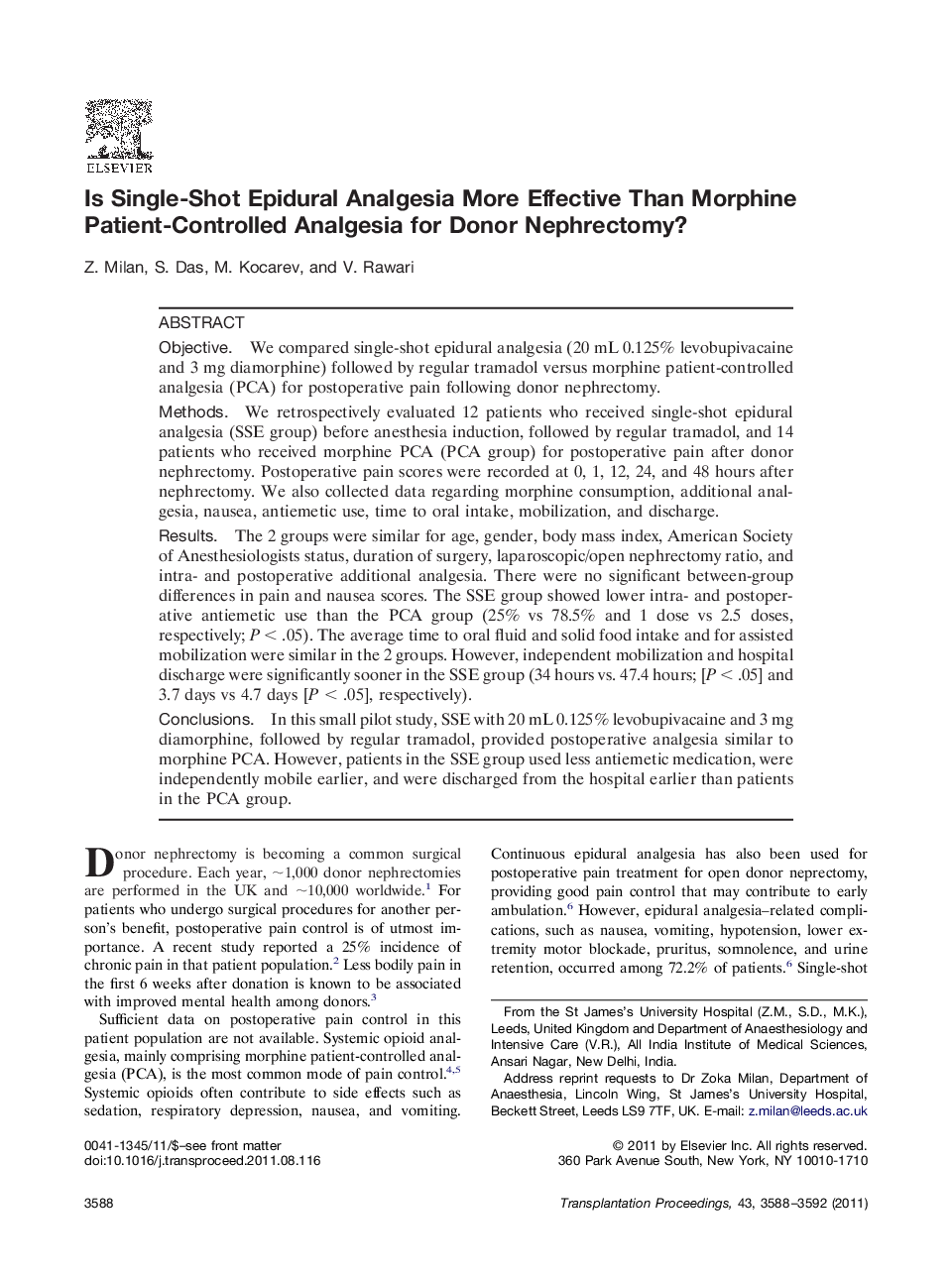| Article ID | Journal | Published Year | Pages | File Type |
|---|---|---|---|---|
| 6248886 | Transplantation Proceedings | 2011 | 5 Pages |
ObjectiveWe compared single-shot epidural analgesia (20 mL 0.125% levobupivacaine and 3 mg diamorphine) followed by regular tramadol versus morphine patient-controlled analgesia (PCA) for postoperative pain following donor nephrectomy.MethodsWe retrospectively evaluated 12 patients who received single-shot epidural analgesia (SSE group) before anesthesia induction, followed by regular tramadol, and 14 patients who received morphine PCA (PCA group) for postoperative pain after donor nephrectomy. Postoperative pain scores were recorded at 0, 1, 12, 24, and 48 hours after nephrectomy. We also collected data regarding morphine consumption, additional analgesia, nausea, antiemetic use, time to oral intake, mobilization, and discharge.ResultsThe 2 groups were similar for age, gender, body mass index, American Society of Anesthesiologists status, duration of surgery, laparoscopic/open nephrectomy ratio, and intra- and postoperative additional analgesia. There were no significant between-group differences in pain and nausea scores. The SSE group showed lower intra- and postoperative antiemetic use than the PCA group (25% vs 78.5% and 1 dose vs 2.5 doses, respectively; P < .05). The average time to oral fluid and solid food intake and for assisted mobilization were similar in the 2 groups. However, independent mobilization and hospital discharge were significantly sooner in the SSE group (34 hours vs. 47.4 hours; [P < .05] and 3.7 days vs 4.7 days [P < .05], respectively).ConclusionsIn this small pilot study, SSE with 20 mL 0.125% levobupivacaine and 3 mg diamorphine, followed by regular tramadol, provided postoperative analgesia similar to morphine PCA. However, patients in the SSE group used less antiemetic medication, were independently mobile earlier, and were discharged from the hospital earlier than patients in the PCA group.
